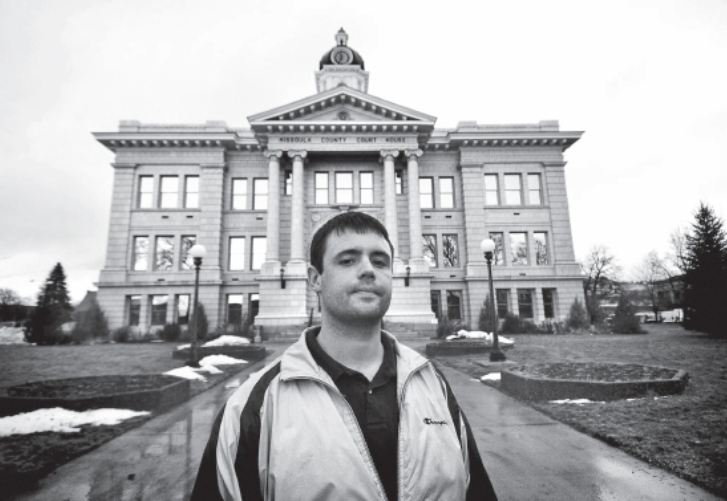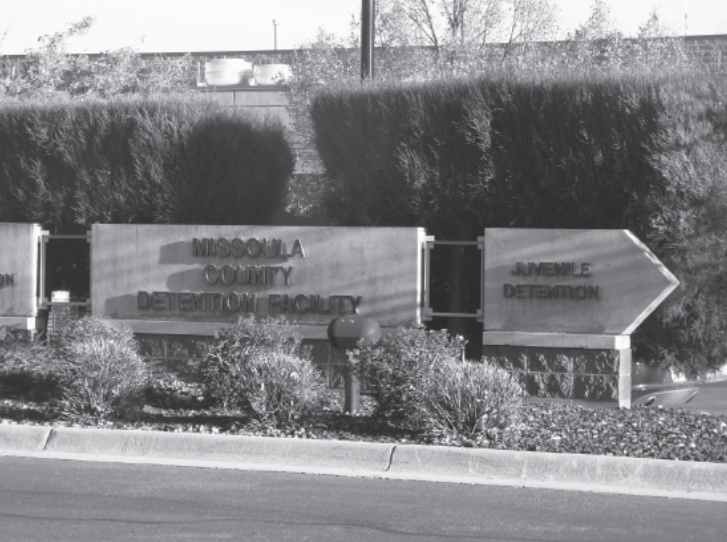
“It’s not easy to beat a justice system determined not to admit it made a mistake.”
So writes Mike Dennison, longtime reporter covering Montana public affairs. Dennison should know: he’s one of the most experienced journalists in the Big Sky State, with his many years of coverage of figures such as Mark Racicot, Jon Tester, and Max Baucus collected in his book Inside Montana Politics: A Reporter’s View from the Trenches. So when news of a certain criminal case reached him, a case that sounded too good to be true—or rather, too bad to be true—like any good ink-hound he began sniffing around, and sure enough, out came a story.
Anyone can say they “didn’t do it.” But to hold that position from the beginning, to hold it against every plea bargain and deal you’re offered, to hold it in the face of a recalcitrant justice system and to mean it every single time you say it—well, that’s the story of Cody Marble. In 2002, Marble was serving a minor sentence for a drug infraction in the Missoula County Juvenile Detention Center when he was charged with raping a fellow inmate, a boy of thirteen. Despite his denials, his claims that the accusations were trumped up, manufactured as a revenge tactic by other inmates mere days before his release, the case went to court where a jury found him guilty of the crime.

Six years would pass, until 2008, before Dennison encountered the case and began his own investigation. And what he found was stunning.
Dennison found critical inconsistencies in testimony—that inmates who claimed to have witnessed the event were, in fact, nowhere near the area at the time. That internal security logs showed that the window of opportunity for such a crime was virtually nonexistent. That prison guards themselves, having observed Marble’s quiet demeanor, strongly doubted that he had committed the crime, but fearing retaliation from higher-ups, were too afraid of going on the record. He found that criminal psychologists too doubted Marble’s capacity for such a violent act, and he found that Marble’s own defense attorney had left key questions unasked during the trial. And perhaps most troublingly, he found that Marble never even had a chance to speak for himself. Until 2008.
Related: Butte: Montana’s Capital of Vice
Covering the case for his newspaper, Dennison began to reopen long-dormant lines of inquiry, tracking down witnesses, interviewing new sources, and cracking open doors in the courthouse that had been long shut. Several of the attorneys and judges that had handled the case on both sides had, as is common enough in the legal world, migrated into other roles, so despite a few instances of stonewalling here and there, Dennison found fresh eyes willing to take another look.

Efforts to free Marble began to gain steam, motion by motion, petition by petition. The Montana chapter of the Innocence Project even secured a written recantation from the original “victim,” who admitted that the whole accusation in 2002 was a setup. That accuser would later recant his recantation under pressure from prosecutors, making it legally useless, but at the time it was enough to convince even more advocates of Marble’s innocence.
As we’ve seen before, sometimes winning requires running out the clock, and sometimes, winning simply requires patience. In 2015 came the biggest break of all: the Montana Supreme Court granted Marble’s request for a new trial, declaring that a previous judge had used the wrong standard in rejecting him years earlier. Marble’s lawyers requested a full review from the new county attorney, Kirsten Pabst—who not only granted it, but convinced that the evidence couldn’t support his original conviction, filed the motion to dismiss the charges against him.

A few more legal hurdles would follow, but eventually, in 2018, sixteen years after the original false charge, Marble’s name was cleared. He was once again a free man.
Not surprisingly, it wasn’t long after his long ordeal before Marble bid farewell to Montana for good, but even since moving away he has continued to advocate for changes to the law that would affect other cases like his—Montana is currently the only state in the country that does not financially compensate the wrongfully convicted post-release.
Guess who’s been following that story too?
Looking for more to read during quarantine? Check out our quaran-reads here. Finding us for the first time, and want to learn more about what we do? Visit our welcome page and sign up for the Crime Capsule email newsletter. See you behind bars!






